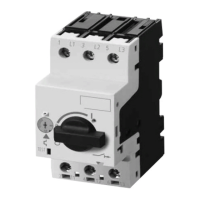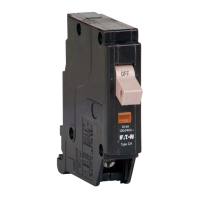I.B. 32-255-1G
Page 35
Effective 12/02
6-4 VACUUM INTERRUPTER INTEGRITY TEST
Vacuum interrupters used in Type VCP-W Vacuum
Circuit Breaker Elements are highly reliable interrupting
elements. Satisfactory performance of these devices is
dependent upon the integrity of the vacuum in the inter-
rupter and the internal dielectric strength. Both of these
parameters can be readily checked by a one minute ac
high potential test. Refer to Table 6.2 for the appropri-
ate test voltage. During this test, the following warning
must be observed:
APPLYING ABNORMALLY HIGH VOLTAGE
ACROSS A PAIR OF CONTACTS IN VACUUM MAY
PRODUCE X-RADIATION. THE RADIATION MAY
INCREASE WITH THE INCREASE IN VOLTAGE
AND/OR DECREASE IN CONTACT SPACING. X-
RADIATION PRODUCED DURING THIS TEST WITH
RECOMMENDED VOLTAGE AND NORMAL CON-
TACT SPACING IS EXTREMELY LOW AND WELL
BELOW MAXIMUM PERMITTED BY STANDARDS.
HOWEVER, AS A PRECAUTIONARY MEASURE
AGAINST POSSIBILITY OF APPLICATION OF HIGH-
ER THAN RECOMMENDED VOLTAGE AND/OR
BELOW NORMAL CONTACT SPACING, IT IS REC-
OMMENDED THAT ALL OPERATING PERSONNEL
STAND AT LEAST FOUR METERS AWAY IN FRONT
OF THE BREAKER ELEMENT.
With the breaker element open, connect all top primary
studs (bars) together and to the high potential machine
lead. Connect all bottom studs together and ground
them along with the breaker frame. Start the machine at
zero potential, increase to appropriate test voltage and
maintain for one minute.
A successful withstand indicates that all interrupters
have a satisfactory vacuum level. If there is a break-
down, the defective interrupter or interrupters should be
identified by an individual test and replaced before plac-
ing the breaker in service.
AFTER THE HIGH POTENTIAL IS REMOVED,
AN ELECTRICAL CHARGE MAY BE RETAINED BY
THE VACUUM INTERRUPTERS. FAILURE TO DIS-
CHARGE THIS RESIDUAL ELECTROSTATIC
CHARGE COULD RESULT IN AN ELECTRICAL
SHOCK. ALL SIX PRIMARY TERMINALS AND THE
CENTER RING OF EACH VACUUM INTERRUPTER
OF THE CIRCUIT BREAKER SHOULD BE GROUND-
ED TO REDUCE THIS ELECTRICAL CHARGE
BEFORE COMING IN CONTACT WITH THE PRIMA-
RY CIRCUIT.
To avoid any ambiguity in the ac high potential test due
to leakage or displacement (capacitive) current, the test
unit should have sufficient volt-ampere capacity. It is
recommended that the equipment be capable of deliv-
ering 25 milliamperes for one minute.
Although an ac high potential test is recommended, a
dc test may be performed if only a dc test unit is avail-
able. In this case the equipment must be capable of
delivering 5 milliamperes for one minute. When a DC
test voltage is used, a high field emission current from a
microscopic sharp spot on one contact can be misinter-
preted as a sign of a vacuum interrupter filled with air.
To avoid a misinterpreted test result, the open inter-
rupter should always be subjected to both voltage
polarities. That is, apply the DC Voltage:
- first, so that one contact of the interrupter is the
cathode, and
- second, so that the other contact of the interrupter
is the cathode.
A bad interrupter filled with air will have a similarly high
leakage current in both polarities. A good interrupter
with a good vacuum level may still have a high leakage
current, but this will generally be in only one polarity.
Such an interrupter usually has a tiny sharp spot on one
contact that produces a high field emission current
when the sharp spot is a cathode, but not on an anode.
In addition, such an interrupter would also normally
withstand the required AC voltage which is the definitive
test of its vacuum integrity.
The current delivery capability of 25 ma ac and 5 ma dc
apply when all three VIs are tested in parallel. If individ-
ual VIs are tested, current capability may be one third of
these values.
Vacuum Interrupter Integrity Test Voltage
ac 60 Hz dc
Up to and including
17.5 kV
24 kV and 27 kV
Breaker Rated
Maximum Voltage
Table 6.2 Test Voltage
27 kV 40 kV
45 kV 45 kV

